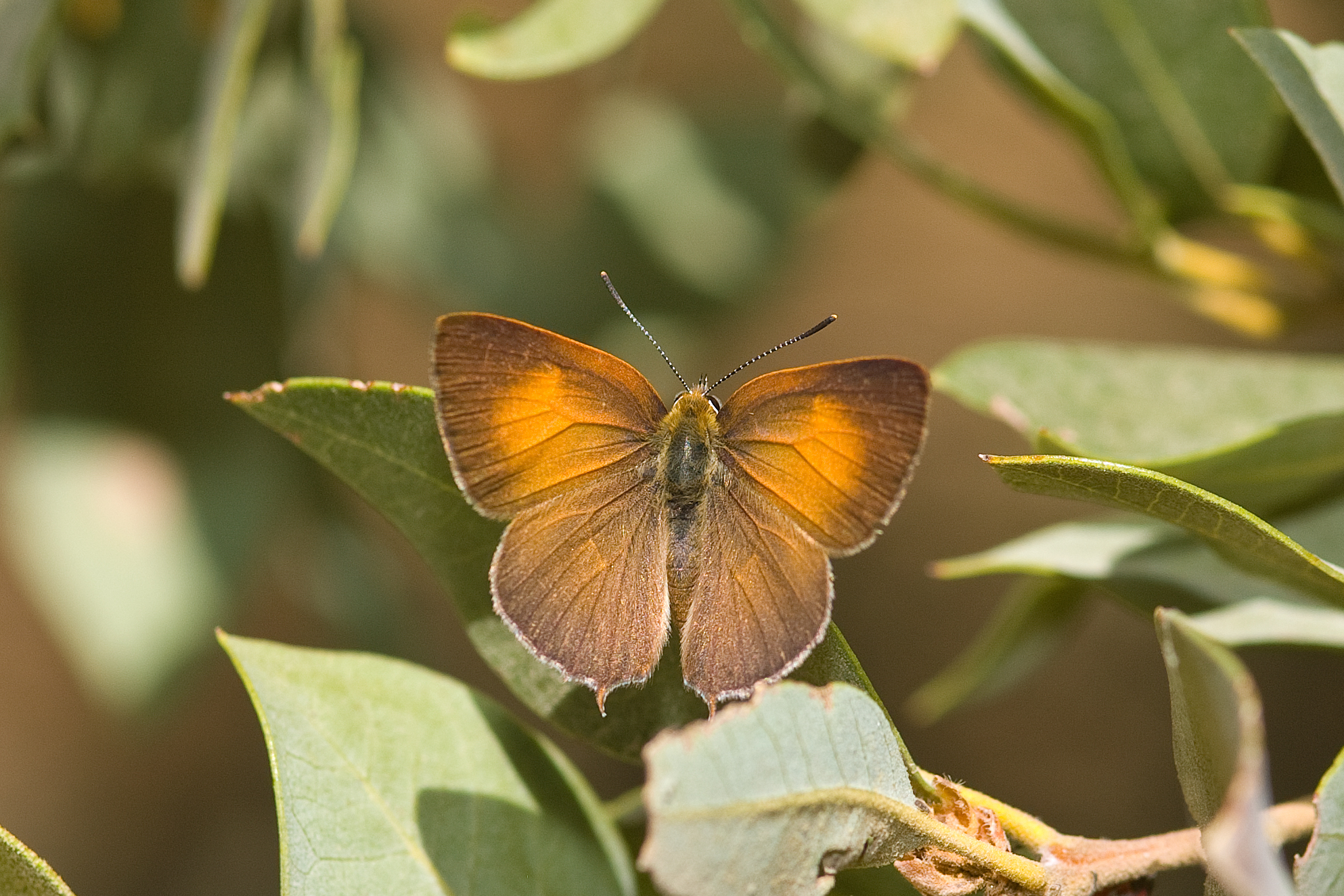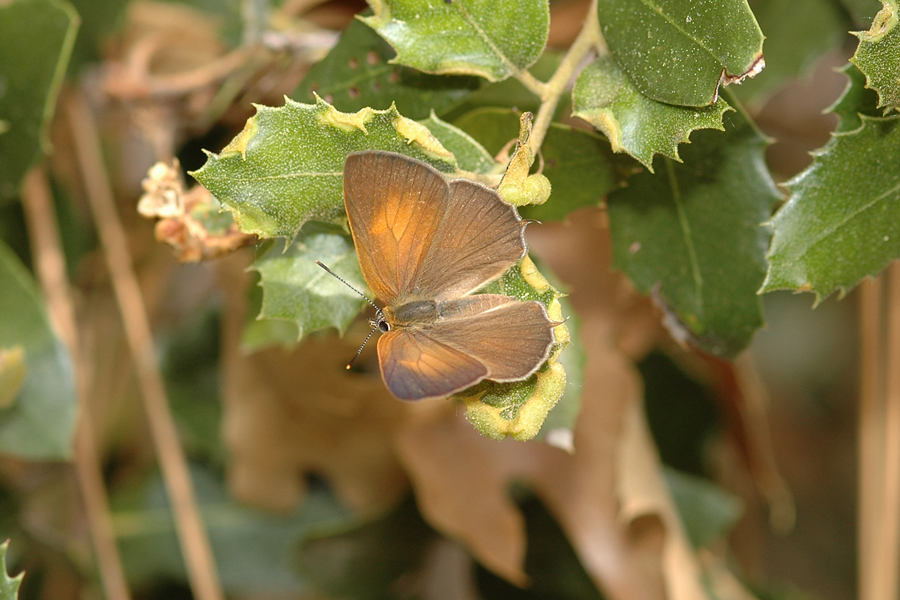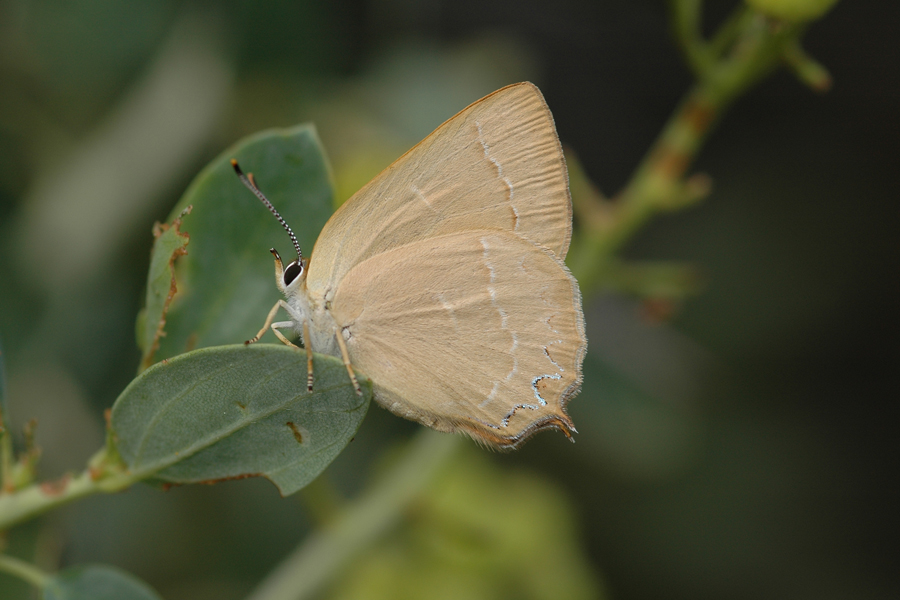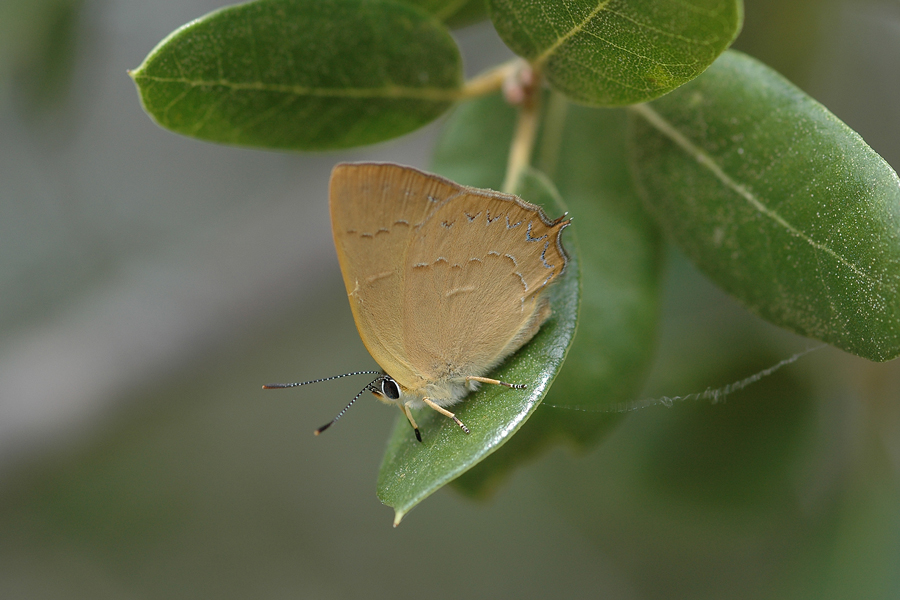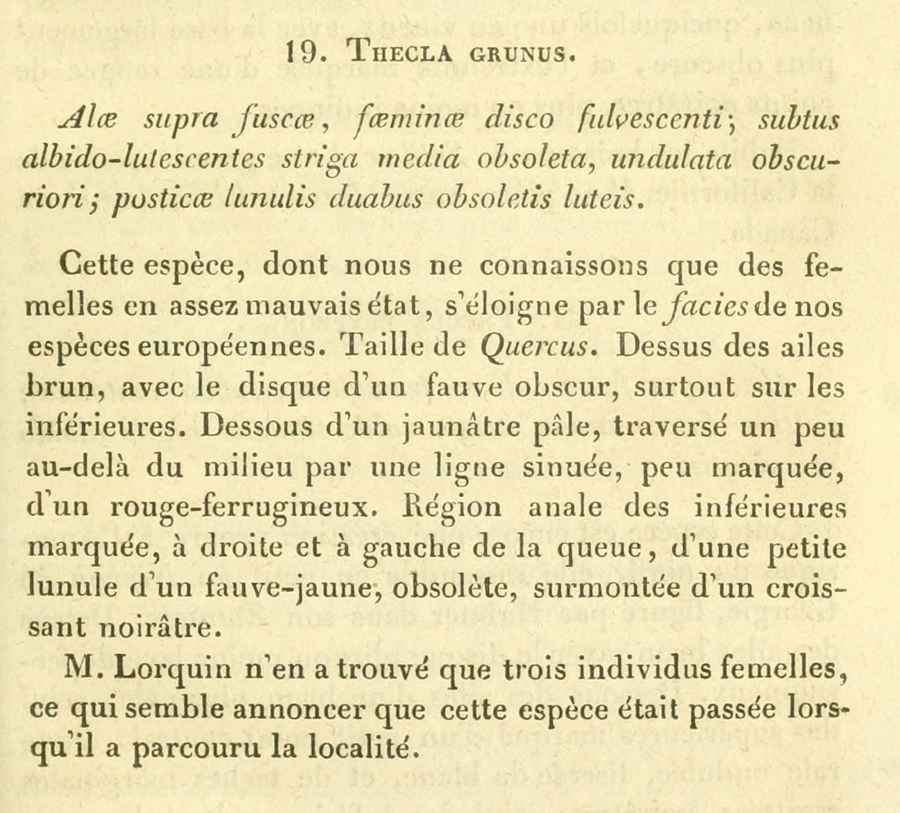Habrodais grunus grunus
Golden Hairstreak
Look for this golden hairstreak around their host oak trees in the summer months. If you get a good look, note the metallic edging of the lunules near the tail. One way this hairstreak differs from many others in its habitat is its ocassional willingness to open its wings. This reveals an orange-brown transition on the forewing that is a nice complement to the underside, especially in fresh individuals. This is a handsome little butterfly.
Golden hairstreaks use canyon live oaks - Quercus chrysolepis - as their larval food plant. They don't seem to stray far from these trees. As with Satyrium genus hairstreaks, the egg is the hibernation stage. Larvae emerge in the spring to feed on tender new leaves. Adults generally are found in June and July.
